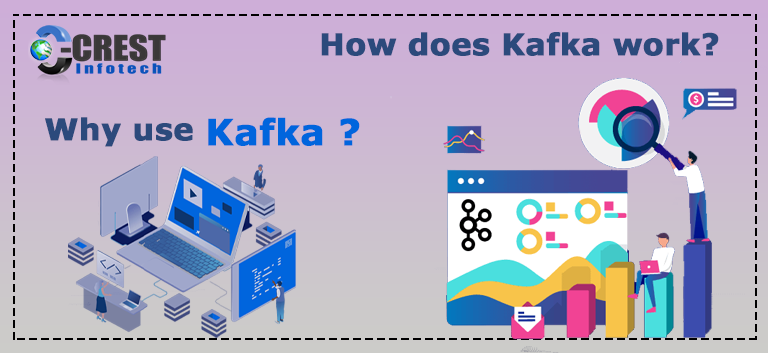When it comes to publishing/subscribing messaging systems, there are several options. This raises the question of why Kafka is such a popular option among developers. Let’s take a look.
Multiple producers
Kafka has the ability to control several producers at the same time. It can handle several producers, whether they’re working on the same subject or a variety of them. As a result, the system is reliable and suitable for combining data from several frontend systems.
For example, a site that serves content to users through a collection of microservices could have a single topic for page views that each service writes in a consistent format. As a result, the user application receives a single stream of application page views on the web, without having to manage consumption across various topics.
Multiple consumers
Apart from multiple manufacturers, Kafka is also designed to enable multiple consumers to read a single stream of messages without interfering with one another. This is in stark contrast to many queuing schemes, in which a message that has been consumed by one client becomes inaccessible to the remaining clients.
Multiple Kafka consumers may also choose to share a stream, ensuring that the message is only processed once by the entire party.
Disk-Based Retention
Kafka’s arsenal includes more than just managing many customers. Kafka frees its users from operating in real-time by retaining messages for a long time. The messages are first written to disc and then stored according to the configurable retention rules. This allows a certain source of messages to have a different level of retention depending on the consumer’s needs.
It’s critical to comprehend what durable retention entails. It ensures that if a customer falls behind due to factors such as traffic congestion or slow processing, data will not be lost. Not only that, but it also ensures that maintenance can be done on users when their apps are in the offline mode for a short time.
There’s no need to worry about messages being lost or being backed up on the producer during this period. As soon as the customers are turned off, the messages will be saved in Kafka. This allows them to resume processing messages from where they left off, without losing any data.
High performance
Kafka’s cutting-edge features make it a great publish/subscribe messaging system that can handle a lot of traffic. Not only that, but its different components, such as manufacturers, brokers, and customers, can be easily scaled to handle large amounts of data.
Adaptable
Kafka’s scalability makes it simple to handle massive amounts of data. Users can start with a single broker and then scale up or a three- to four-broker production cluster. They may then progress to a larger cluster of tens or hundreds of brokers. When the amount of data grows, so does the number of brokers.
When the cluster is up and running, expansions can be done. One crucial point to keep in mind is that the system’s availability is unaffected by the extension. This also means that a cluster of several brokers can easily handle the loss of a single broker, allowing clients to be served.
How does it work ?
Now that we’ve gone through the various Kafka terminologies, let’s move on to the next step. Let’s take a look at how it works in practise. Kafka collects data from a variety of sources and organises it into “topics.” These data sources can be as basic as a transactional log of and store’s grocery store records.The topics could include things like “number of oranges sold” or “number of sales between 10 a.m. and 1 p.m.”
Anyone with a need for data insight should look into these topics.You may think that this sounds a lot like how a traditional database works. In comparison to a traditional database, Kafka would be better suited to anything as large as a national chain of grocery stores processing thousands of apple sales per minute.Kafka accomplishes this feat with the help of a Producer, which serves as a link between applications and topics. NodeJs Development isn’t optimized for high throughput applications such as Kafka.
Kafka Topic Log is Kafka’s own archive of segmented and organised data.This data stream is commonly fed into real-time processing pipelines such as Storm or Spark. It’s also used to populate data lakes, such as Hadoop’s distributed databases. Consumer, like Producer, is another interface for reading topic logs.
Not only that, but the information contained in it can also be passed on to other applications that need it.When you combine all of the components, as well as other popular Big Data analytics architecture elements, Kafka starts to shape the central nervous system.Data passes through this system via input and is captured by apps, storage lakes, and data processing engines.
You can Hire NodeJs Developer for part time, full time and scheduled time of period for your business development process. Contact Crest Infotech to know more about NodeJS Development services in Details.



